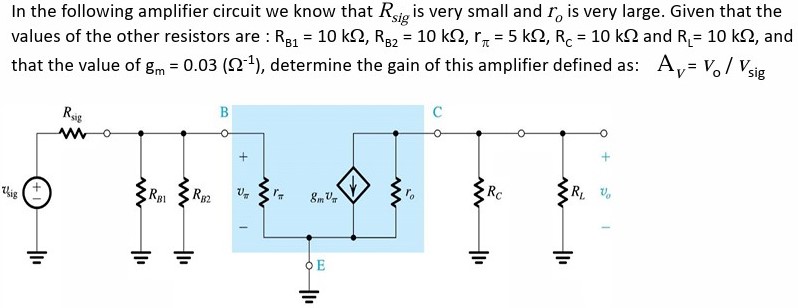In the following amplifier circuit we know that Rsig is very small and ro is very large. Given that the values of the other resistors are: RB1 = 10 kΩ, RB2 = 10 kΩ, rπ = 5 kΩ, RC = 10 kΩ and RL = 10 kΩ, and that the value of gm = 0.03 (Ω−1), determine the gain of this amplifier defined as: AV = Vo/Vsig
